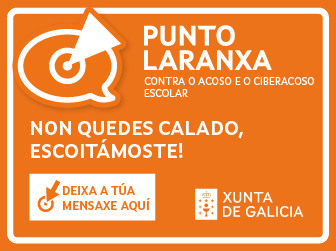STE(A)M: Europeana – integrando a herdanza cultural nas clases STEM
- STE(A)M porque hai que integrar as Artes en tanto que Deseño.
- EUROPEANA: plataforma da Comisión Europea enfocada na dixitalización da herencia cultural, un patrimonio cambiante e crecente ó que esta plataforma dá cobertura. Un apéndice é Teaching with Europeana, onde profes explican como aplicaron os recursos da páxina a un proxecto escolar.
- Tarefa: deseñar unha actividade STEAM que incorpore estes recursos. Escollemos facer unha app que tería unha base de datos de paxaros (fotos reais) linkados ó seu canto e a cadros sobre o paxaro. Clickando sobre eles teríamos información sobre cada exemplar.
Conexións
- É fundamental establecer lazos coas familias e as comunidade
- Scientix – A STEM Discovery Week, que este ano se celebra por 3º ano consecutivo. Na edición 2018 involucráronse 40 países con máis de 800 proxectos.
- Temos que presentar un exemplo, e escollemos o proxecto MarumaSat
- Unha boa plataforma para publicar e coñcer experiencias STEM colaborativas é o blog de Scientx, para o cal debemos redactar un post seguindo un modelo dado. Fago un post sobre o noso Club de Ciencia, proxecto Casiña dos Maios
TITLE: Bioclimatic Module A Cachada
Based on Bioarchitecture techniques, we created a bioclimatic module sized 5*3*2 m^3 to analyze Temperature, Humidity and Radon and compare the results with the ones we measured in ordinary buildings.
In our school, IES Plurilingüe A Cachada, we have been developing PBL methodologies for the last 10 years, projects that mainly involved Science, Tech, Languages and History (audiovisual fairs, robot competitions, Scratch challenges, etc.) Due to the motivation these experiences brought, we decided to start a new IBSE project which connects students and their immediate reality: their houses.
The topic of the activity is Bioarchitecture: homes and health. Are the conventional homes good for a healthy life? Are they sustainable environmentally speaking? What improves the life of the human being when he inhabits bioconstructed spaces?
To develop this project we created a Science Club in which 25 students from 12 to 16 are involved. We also looked for different takeholders: families, some local companies, our government and the University.
We started with a previous research about the basic principles of bioconstruction, namely: materials, energy, structural solutions. For this we organised a workshop with the architects’ association Espiga, studying healthy materials, passive use of solar energy, waste reduction and environmental impact in the extraction of materials, minimization distances transfer materials, etc. Based on what we have learned in this workshop, in the subjects of Technology and Physics and Chemistry we carried out qualitative studies of the conventional construction materials, and in Biology, the markers that indicate an optimal habitability for the human being.
After this, we went for the project: the design of a prototype for trials, which we named Casiña dos Maios. We work on it throughout the course (see all pictures), and so we had, in June, our "bioclimatic module" almost ready. We made it entirely of mud, sand, straw, lime and wood, with the only conventional addition of a plastic EPM fabric to avoid leakage. We had the support of local companies and our council, but it is not indispensable.
The second phase was measuring (we are immersed in it this course): we designed bioclimatic data collection systems (Temperature, Humidity, air quality, presence of radon gas, hours of luminosity, etc.). In these investigations different groups of students and students are working, with help of teachers and University professionals.
The end of the project will be a display of data, creating statistics, contrasting information and disseminating our conclusions, which will help other schools to replicate it.
Portal eTwinning
- Ventaxas de usar eTwinning: obtención de selos de calidade e, en consecuencia, bolsas
- Emprego do Twinspace como portal para aloxar a web do proxecto. Permite crear páxinas e engadir posts
- Ferramentas útiles ou simpáticas para que diferentes membros dun grupo propoñan, voten, opinen sobre temas (Poll.ly), debuxen colaborativamente (Colorillo), elixan entre diferentes imaxes, mesmo subindo unha nova (Dotstorming) ou para avaliar (Wooclap)

